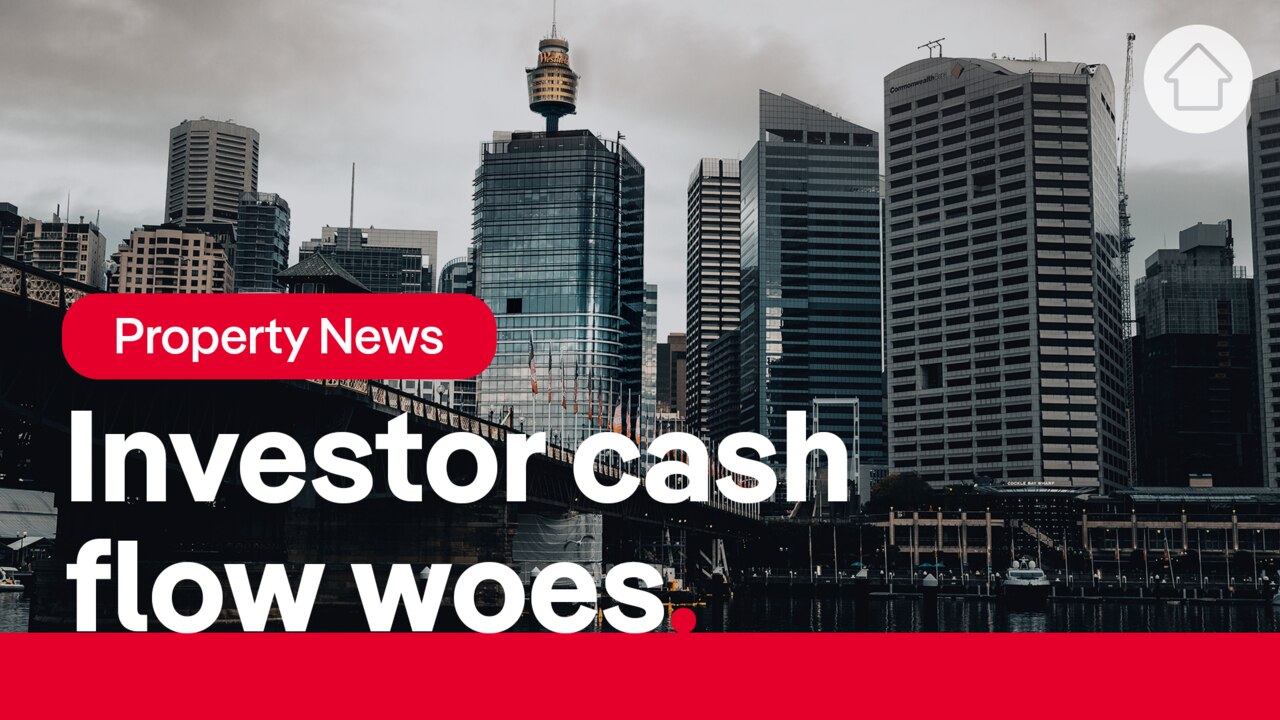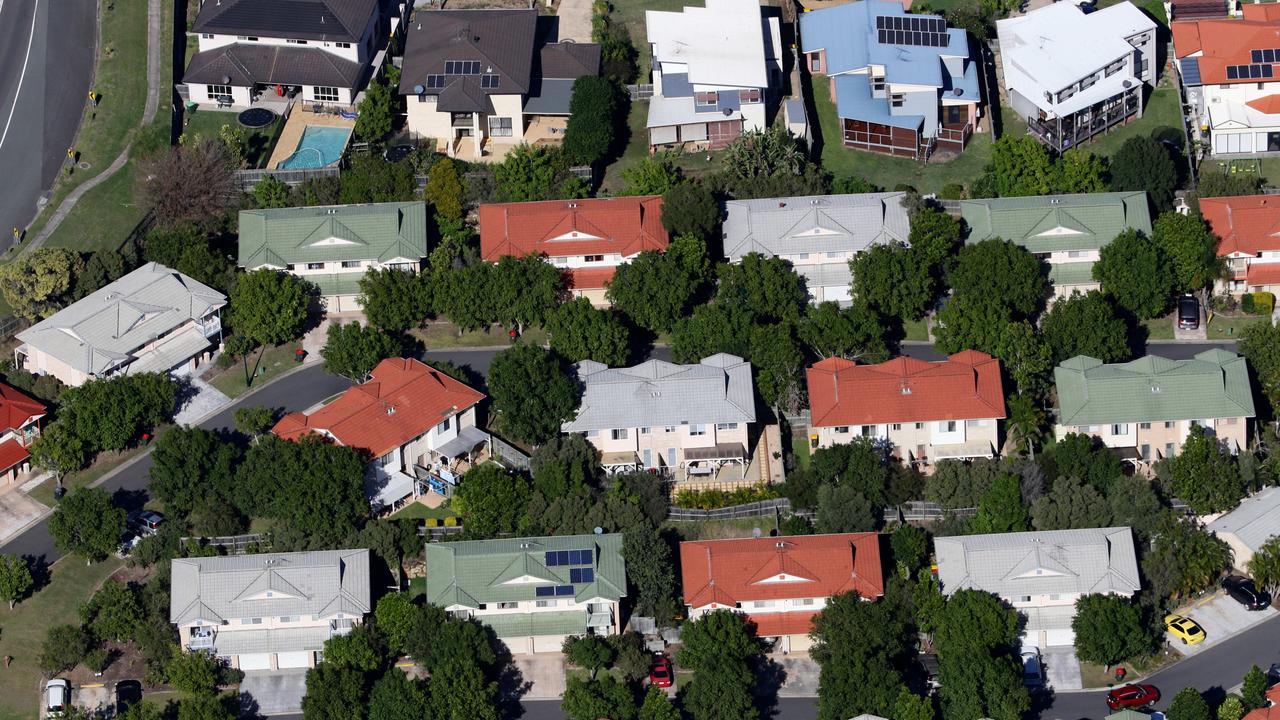‘Tipping point’: NSW regions where latest rate hike will hit hardest
The latest interest rate hike could be the “tipping point” that causes households in some Sydney regions to lose their homes, new research shows.

Property
Don't miss out on the headlines from Property. Followed categories will be added to My News.
Parts of Western Sydney, including Blacktown and Fairfield, will be hit hardest by the latest rate hike – with a spate of forced sales expected to take the heat out of the recent housing market recovery.
The Reserve Bank of Australia announced at its latest board meeting that the cash rate would rise 25 basis points to 4.35 per cent, but new data showed the impact would be felt differently across regions.
The latest hike means close to 52,000 households in Blacktown, or about 87 per cent of borrowers in the area, would be in a negative cash flow position, according to Digital Finance Analytics (DFA) data.
Close to 30,000 households would be in the position of spending more than they were earning in the Campbelltown region, accounting for more than 95 per cent of borrowers. In Fairfield, the proportion would be close to 80 per cent and in the Liverpool area it was 87 per cent.
Households in this position were deemed more likely to default on their loans or be forced to sell at discounted prices, according to DFA.

The Hills district was expected to be another flash point, with the latest rate hike pushing the total number of households in a negative cash flow position to nearly 26,000, or 56 per cent of borrowing households.
A similar proportion (just over half) of borrowing households were spending more than they were earning in the LGAs of Penrith, Parramatta and Lake Macquarie, while in Camden it was about three quarters of borrowers.
DFA’s modelling, which was based on extensive polling, considered the total amount households were spending each month, including on mortgage repayments, and how this compared with their earnings.
Digital Finance Analytics data scientist and banking sector analyst Martin North said these numbers were “an early warning sign of potential issues ahead”.
“In cashflow terms they are underwater,” he said. “Generally households under pressure spend less, hunker down, and some, two to three years later end up selling or even defaulting.”
Finance Brokers Association of Australia director Peter White said he was “deeply concerned” about the implications of another rise given how many households were already struggling.
“We surveyed Australians earlier this year and found a huge spike in people seeking psychological help and other counselling specifically due to interest rate rises. I fear another rise … may rapidly exacerbate this,” he said.
Shiv Nair, director of Ray White TNG-Glenwood in Sydney’s northwest, said some homeowners should consider cashing out early.
“We may soon see very different property market conditions,” he said. “Right now, 10 to 20 percent of our sales are from distressed sellers ... For property owners, the current climate presents a prime opportunity to sell before we potentially see further rate increases in December and beyond, which could soften buyer confidence.”
CoreLogic Research Director Tim Lawless said the decision to lift the cash rate by 25 basis points was “likely to disrupt confidence and take some further heat out of the housing market rebound”.
“The lift in rates combined with ongoing cost of living pressures and alarming geopolitical environment is likely to weigh on consumer sentiment, which is already in deeply pessimistic territory,” he said.

“Lower confidence could act as a drag on housing market activity, denting buyer demand at a time when advertised stock levels are rising across most regions. A rebalancing between buyer demand and advertised stock levels is likely to take some heat out of the housing upswing.”
Finder’s head of consumer research Graham Cooke said the rise was a tough pill to swallow for homeowners.
“Mortgage holders are already on the ropes, the last thing they wanted was another slug from the RBA,” he said.
“Aussies with a $590,000 mortgage will now be forking out roughly $1345 more per month than they were in April last year. That’s a huge amount of extra money to be spending on your mortgage, especially when the cost of almost everything else is also going up.”
Compare Club’s head of research Kate Browne said “this rate rise is really going to hurt”.
“Our panel of mortgage brokers says that many customers are telling them they cannot survive many more rate rises,” she said.

“This is going to be a very tough time for mortgage holders and first home buyers as there appears to be no immediate relief in sight in rising interest rates.
“Many Australians are frustrated as so many things affecting inflation are out of their hands; they have tightened their belts and are cutting back on spending, but with rising costs in fuel, food, and rent, there’s not much more they can do.”
Canstar’s editor and money expert Effie Zahos said the latest hike could be the “tipping point”.
“The pressure of a 13th rate hike might simply be too much for some households,” she said.
Ms Zahos said homeowners in financial stress had three main options that could buy them some relief in the short term.
These include switching to a low one-year fixed rate, reverting from principal and interest repayments to interest-only payments and extending loan terms by five years.




